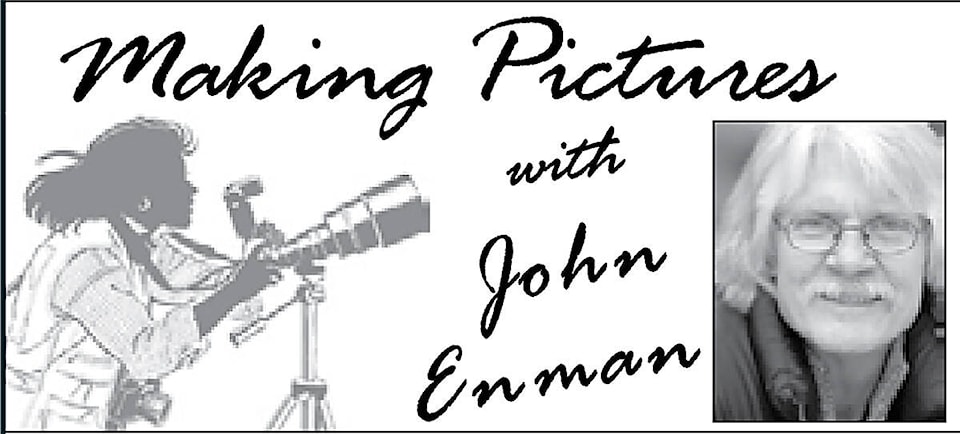Last week after I had closed my shop I sat with my friend Drew Vye and watched a few minutes of a program about long time legends that included Bigfoot, the Abominable Snowman and the Loch Ness monster. We are both sceptical when it comes to those stories and Drew made his usual joke that “they must be true ‘cuz’ they are always out of focus”. Ya, why is that?
Today I saw an ad about the upcoming Vancouver used camera sale, and like the pictures of Bigfoot that image was also out of focus. Why was that?
Okay, maybe that person that photographed the famous Bigfoot back in 1967 was too excited and forgot to focus his movie camera. And the fellow in 1934 that took the picture of the Loch Ness monster shot was so eager to push his shutter that he also forgot to focus. And possibly the person (one would assume understood cameras) that made the advertising photo for the camera sale didn’t realize that there would be camera shake in the dimly lighted hall. Gosh, why was that?
I remember walking around with my new single lens reflex camera back in 1967 taking pictures of my army buddies. I had no experience with cameras that needed to be focused. Yet, very few of those pictures were out of focus. Over exposed, and under exposed, and not framed very well for sure, but most were actually in focus.
So why are those famous pictures of mysterious folklore out of focus? Could it be something as simple as not understanding depth-of-field? Could they ‘all’ have been using the widest aperture on their camera’s lens? The wider the aperture the less the area around the place the focus is set at will be. Hmmm, if only those hunters of allusive creatures had learned about depth-of-field.
There must be a reason why depth-of-field is so elusive to so many photographers.
These days I wonder if the confusion some photographers have might be because modern cameras are so jam-packed with image saving abilities like internal computers that control focus, balance the colour, and manage the exposure. Maybe… Gosh, all that makes me understand why some new users believe all they need to get a good photo is move the mode selector to “P” then point and shoot with little thought to anything but how exciting it is to take the picture.
In application, the wider the selected lens aperture the less the depth-of -field, or that area of sharp focus around the main subject will be. Practically, the field of focus will be one-third in front and two-thirds behind the subject.
Using a wide aperture can increase the exposure in limited lighting conditions; but, along with the benefit of additional light reaching the camera’s sensor, the resulting effect is reduced depth of field. Creating a field of focus behind the subject of four inches or so might look really good when making a portrait of one person, but it is not always effective in a scenic or a striding Bigfoot.
The smaller the selected lens aperture, the more the area of focus in front of and behind the subject will be. I prefer using a small aperture for scenic and wildlife photos where I am concerned with all elements in the photograph, front to back, being sharp. Along with selecting what equipment I think is best for a photograph I also think about the exposure, shutter speed and aperture.
The Internet is packed with information on photography and there are thousands (millions?) of books and how-to articles on photography that are easy to read. I expect that examination on scenic photography, for example, will include a full discussion of depth-of-field.
My suggestion for anyone following bigger than usual footprints in the forest, a snowy mountainside, or spending evening after evening concentrating on ripples in a large lake, is to learn about depth-of-field, get comfortable with their camera and by all means stay calm when that once in a lifetime chance to photograph one of those illusive creatures takes place.
Stay safe and be creative. These are my thoughts for this week.
Contact me at www.enmanscamera.com or emcam@telus.net.
_______________
Like us on Facebook
